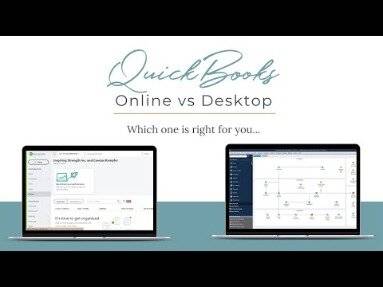Content

This calls for separate break-even calculations—one for each fixed cost level. At the break-even point, the total cost and selling price are equal, and the firm neither gains nor losses. If your business model changes to incorporate a new sales channel, that’s a good opportunity to do a break-even analysis. For example, if you have a brick-and-mortar store but want to start an e-commerce business, your costs and pricing might change. You should make sure you at least break even so that you don’t put too much financial strain on your business. Sometime businesses need to lower their pricing strategy to beat competitors in a specific market segment or product.

All financial products, shopping products and services are presented without warranty. When evaluating offers, please review the financial institution’s Terms and Conditions. If you find discrepancies with your credit score or information from your credit report, please contact TransUnion® directly. At the break-even point, you’ve made no profit, but you also haven’t incurred any losses. This metric is important for new businesses to determine if their ideas are viable, as well as for seasoned businesses to identify operational weaknesses. This may influence which products we review and write about , but it in no way affects our recommendations or advice, which are grounded in thousands of hours of research.
Start your 3-day free trial today!
The $120 is the income earned after deducting variable costs and needs to be enough to cover the company’s fixed costs. Break-even analysis looks at the level of fixed costs relative to the profit earned by each additional unit produced and sold. In general, a company with lower fixed costs will have a lower break-even point of sale. For example, a company with $0 of fixed costs will automatically have broken even upon the sale of the first product assuming variable costs do not exceed sales revenue. If you prefer to see it mathematically, we would add our total variable costs (that we’ve seen before), to the total fixed costs per month of $5,000.
- So, when lowering pricing, businesses need to figure out how many more units they need to sell to offset or makeup a price decrease.
- These costs vary in direct proportion to quantity sold or unit volume.
- Many or all of the products featured here are from our partners who compensate us.
- Some variable costs rise at a rate slower that the rate of production increase.
Our team of reviewers are established professionals with decades of experience in areas of personal finance and hold many advanced degrees and certifications. If the same cost data are available as in the example on the algebraic method, then the contribution is the same (i.e., $16). Based on your review, you have decided to charge $32 for each grooming. Hearst Newspapers participates in various affiliate marketing programs, which means we may get paid commissions on editorially chosen products purchased through our links to retailer sites.
Variable Costs
To get to our total costs per month of producing birthday cakes, we need to add the total variable cost per month, and the total fixed cost per month. It’s the point at which total sales are equal to total expenses. More specifically, it’s where net income is equal to zero and sales are equal to variable costs plus fixed costs. Therefore, given the fixed costs, variable costs, and selling price of the water bottles, Company A would need to sell 10,000 units of water bottles to break even. The term “semi-variable costs” refers to costs that go into production that may start out as fixed, but will become variable once you hit a certain level of production. This would make utilities a semi-variable cost for your company.
Eventually the company will suffer losses so great that they are forced to close their doors. If we represented our revenue graphically, we would get an upward-sloped line, similar to the variable costs one, but steeper. Since the price at which we sell each unit of our product is higher than what it costs us to make it, when we multiply it by the number of units sold, total revenue grows faster than total costs. In contrast to fixed costs, variable costs increase based on the number of units sold. If customer demand and sales are higher for the company in a certain period, its variable costs will also move in the same direction and increase .
Resources for YourGrowing Business
These expenses can’t be changed in the short-term, so if you’re looking for ways to make your business more profitable quickly, you should look elsewhere. There will be some expenses you’ll have more control over, like variable costs. You’ll be able to quickly cut down on these costs to increase profitability. Fixed costs, on the other hand, are more stable, and you often have less control over them. For example, you’ll always be responsible for paying expenses like rent, utilities, and licenses. There are many techniques for making your business more profitable.

Depending on the input figures, it is possible to have no ranges with a break-even point, or break-even in just one span, or break-even points multiple spans. For an introduction to rmodel-based risk and sensitivity analysis, see the article Risk and Sensitivity Analysis for the Business Case. For working spreadsheet examples of the break-even equation and break-even graphs, as they appear above, see the Excel-based ebook Financial Metrics Pro. Finance Strategists is a leading financial literacy non-profit organization priding itself on providing accurate and reliable financial information to millions of readers each year.
Here’s a rundown of what to know as well as the calculations needed to conduct a financial analysis. A break-even analysis allows you to determine your break-even point. Once you crunch the numbers, you might find that you have to sell a lot more products than you realized to break even. Fixed costs are easy to calculate for existing businesses, but new businesses must do research to get the most accurate figures available. If you’re looking for financing for your business, such as small business loans or business credit cards, Nav can help.
- Since the other coffee shops will still be priced higher than Back Door, the owner believes that there will not be a decrease in sales volume.
- Higher production levels divide fixed costs among more units, which actually drives down the cost per item, despite the rise in variable costs.
- The contribution margin is how much profit you get from each unit after you subtract the variable costs required to make that unit.
- Variable costs often fluctuate, and are typically a company’s largest expense.
It helps you know how much of your How To Do A Breakeven Analysis With Fixed Cost & Variable Cost dollars will have to go back into the business and production line, and how much you will need to increase sales volume or pricing to earn a profit. The contribution margin is how much profit you get from each unit after you subtract the variable costs required to make that unit. It helps you understand how much each additional unit will cost you to make, and how that may affect your sales revenue. If your monthly fixed costs are $5,000 and you’re able to do 1,000 oil changes, then your average fixed cost per unit is $5 per oil change. If you’re able to increase oil changes up to 2,000, your average fixed cost per unit will be cut in half to $2.50. Typical variable costs include per unit costs for such things as factory direct labor, materials, and sales commissions.
Adding a new sales channel
Break-even analysis tells us at what level an investment has to reach so that it can recover its initial outlay. Let us try to find the number of units needed to be sold by General Motors’ automotive division to breakeven. This means Sam’s team needs to sell $2727 worth of Sam’s Silly Soda in that month, to break even. Contribution Margin is the difference between the price of a product and what it costs to make that product.
How to Calculate the Break-Even Point – Forbes Advisor INDIA – Forbes
How to Calculate the Break-Even Point – Forbes Advisor INDIA.
Posted: Tue, 04 Oct 2022 07:00:00 GMT [source]
